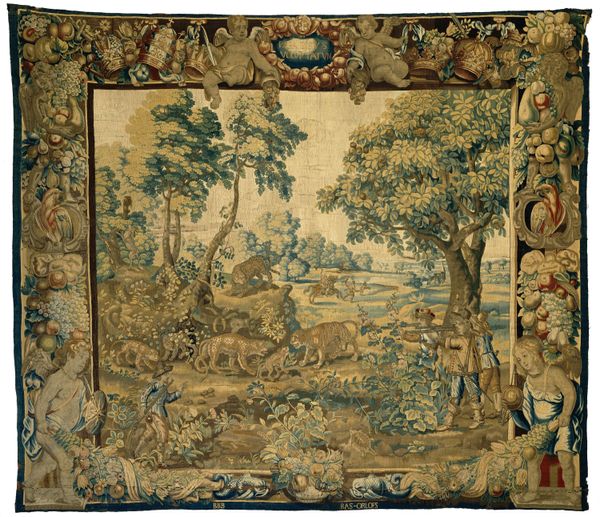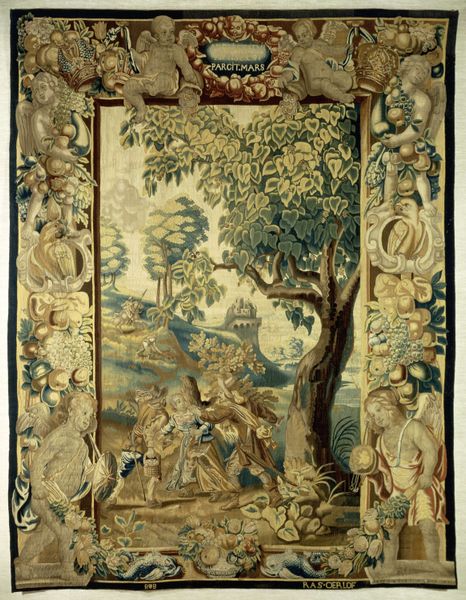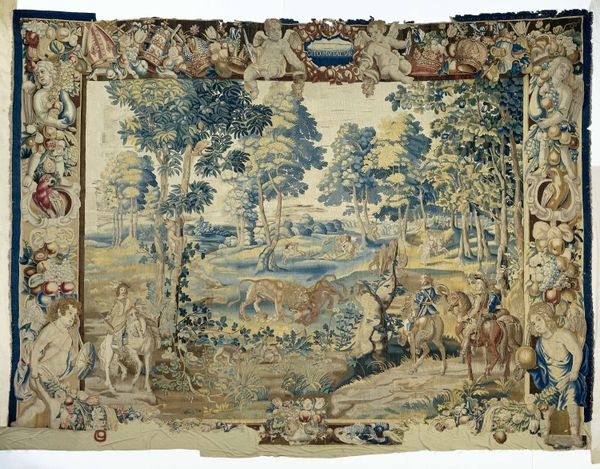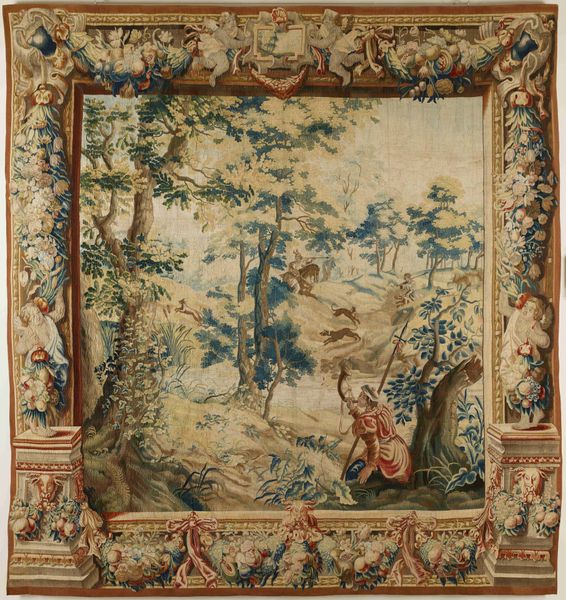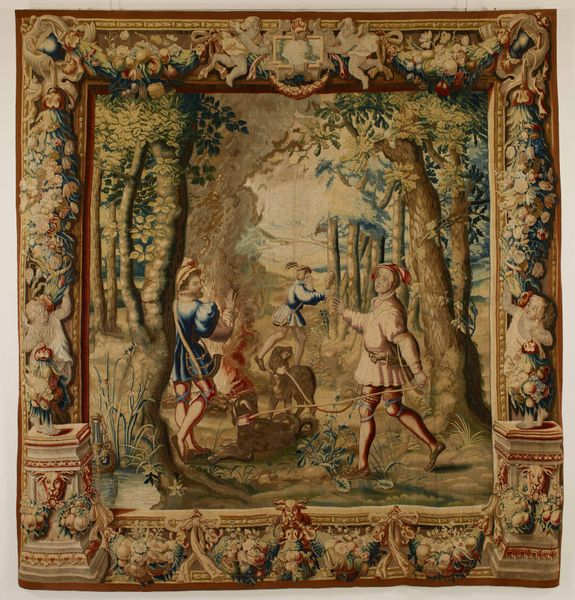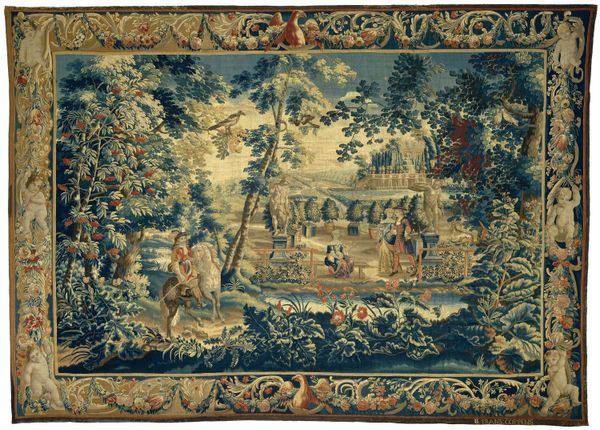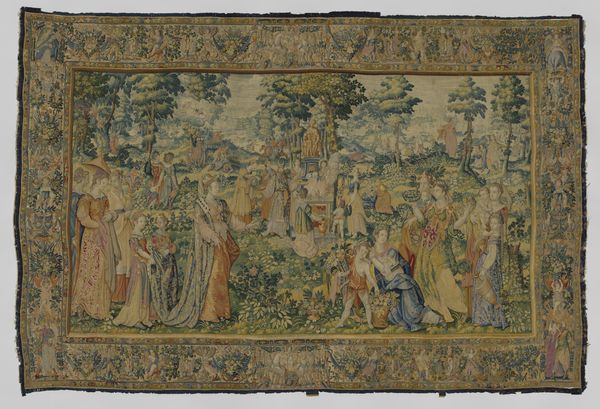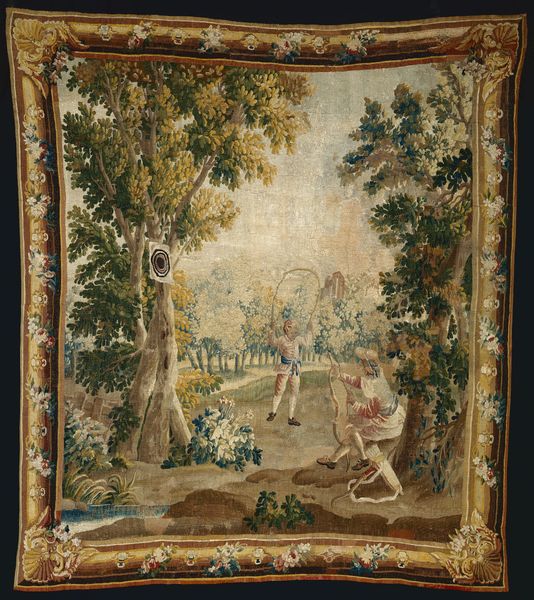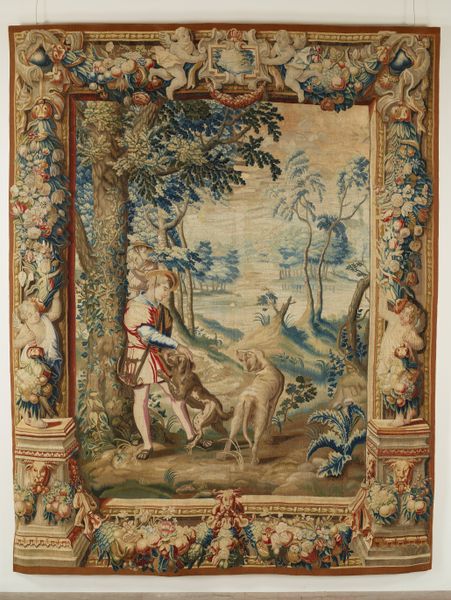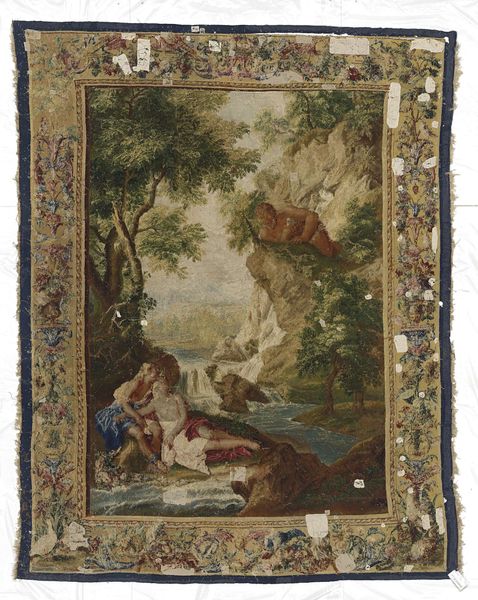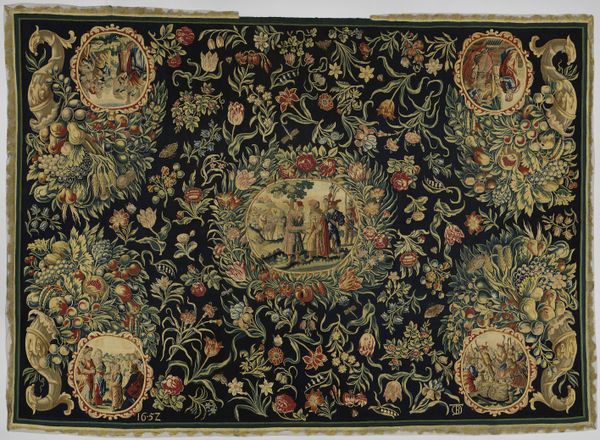
#
baroque
#
landscape
#
genre-painting
Dimensions: height 349.0 cm, width 347.0 cm
Copyright: Rijks Museum: Open Domain
Curator: Here we have a stunning tapestry from around 1650, attributed to Erasmus Oorlofs. The title translates to “Landscape Verdure with Ostriches and Hunting Scenes.” What are your initial thoughts? Editor: It’s wonderfully dense, almost overwhelming in its detail. A bit chaotic. You've got hunting scenes, exotic birds, putti overflowing with fruit... What would something like this have *meant* to someone in 1650? Curator: That’s the beauty of examining it through a historical lens! These tapestries were incredibly expensive to produce; they weren't merely decorative. Woven tapestries like this served as symbols of status, practically pronouncements of wealth and taste by the families who commissioned them. The size, the skill involved, the cost of the materials... Editor: I’m struck by the materials. Just imagine the amount of wool and silk dyed and painstakingly woven. Considering that Erasmus Oorlofs and weavers of this tapestry were dependent on global trade networks for the raw materials—what can it reveal to us about early manufacturing and global consumption? It’s not just "decoration"; it's physical testament to complex networks of labour and distribution. Curator: Exactly. And think about where it would have been displayed – perhaps in a grand hall, absorbing sound and adding warmth as well as prestige. They became integral backdrops for significant family and state events and public spectacles. These were designed to *impress*. The landscape is idyllic, carefully cultivated, demonstrating dominance over the natural world. Even the ostrich represents the exotic and controlled, possessions on display for visitors and fellow noblemen. Editor: These types of objects underscore the blurred boundary between art and craft. Traditional artistic values often emphasize uniqueness or creative vision, yet pieces like these existed due to collaborative labour; design to weave. Curator: And its role continued even centuries later, informing how we understand their original owners. Tapestries became key cultural objects that played vital roles in both elite identity construction. These luxurious art pieces speak of far more than pretty pictures. Editor: True! It's exciting when analyzing this art and also uncovering information on both the cultural environment surrounding production in the past AND continuing social environments through which art survives until today! Curator: Agreed! They certainly prompt new avenues for reinterpretation.
Comments
No comments
Be the first to comment and join the conversation on the ultimate creative platform.
